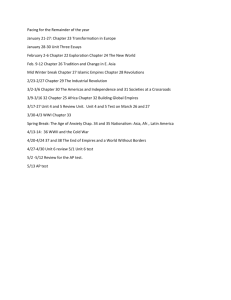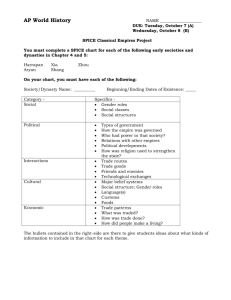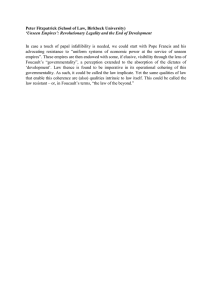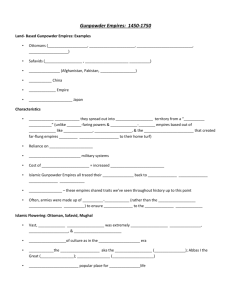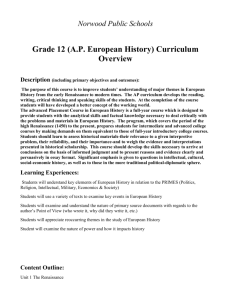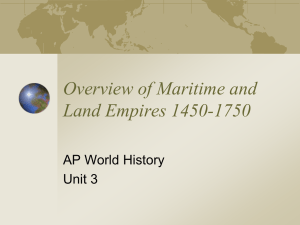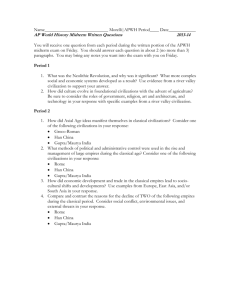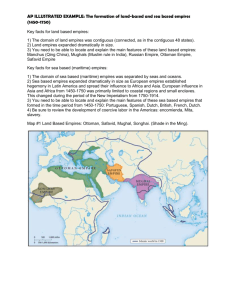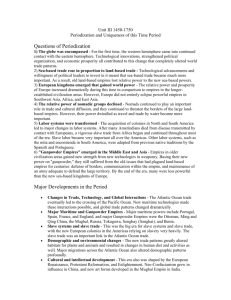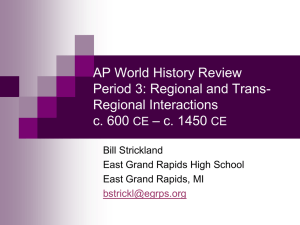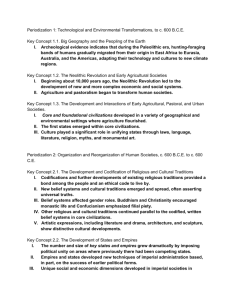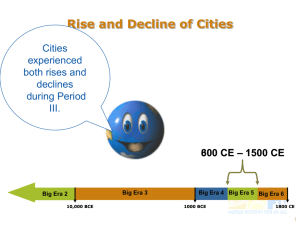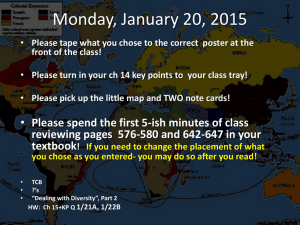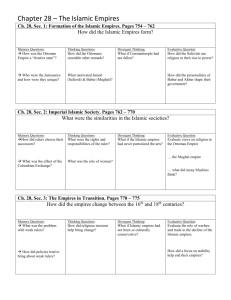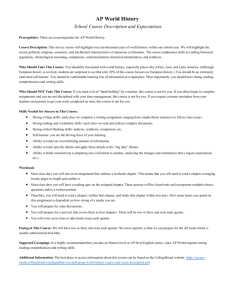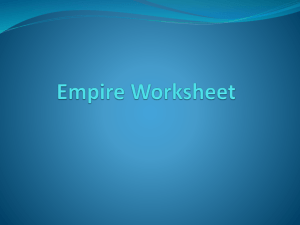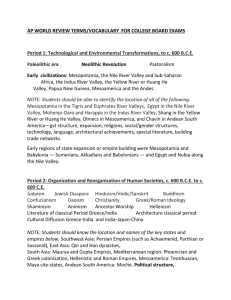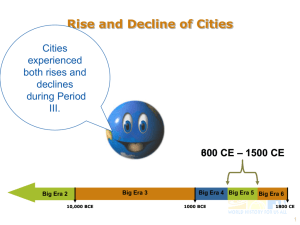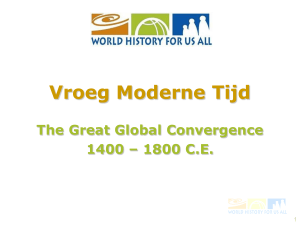APWH – PERIOD 4 MAP TEST (1450
advertisement
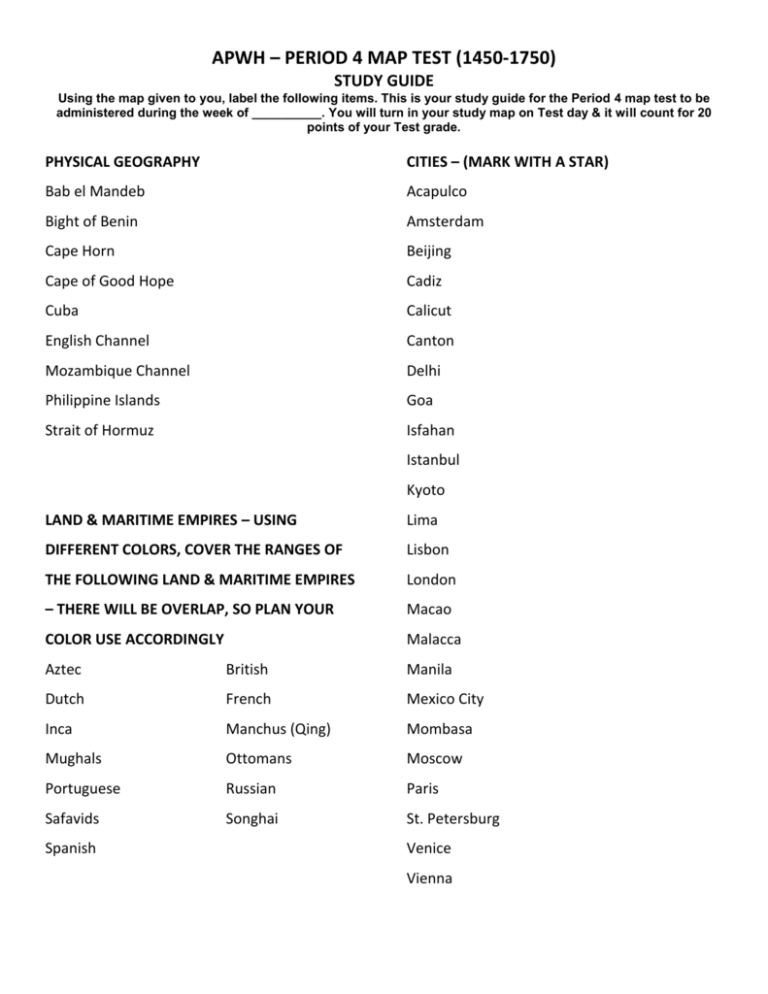
APWH – PERIOD 4 MAP TEST (1450-1750) STUDY GUIDE Using the map given to you, label the following items. This is your study guide for the Period 4 map test to be administered during the week of __________. You will turn in your study map on Test day & it will count for 20 points of your Test grade. PHYSICAL GEOGRAPHY CITIES – (MARK WITH A STAR) Bab el Mandeb Acapulco Bight of Benin Amsterdam Cape Horn Beijing Cape of Good Hope Cadiz Cuba Calicut English Channel Canton Mozambique Channel Delhi Philippine Islands Goa Strait of Hormuz Isfahan Istanbul Kyoto LAND & MARITIME EMPIRES – USING Lima DIFFERENT COLORS, COVER THE RANGES OF Lisbon THE FOLLOWING LAND & MARITIME EMPIRES London – THERE WILL BE OVERLAP, SO PLAN YOUR Macao COLOR USE ACCORDINGLY Malacca Aztec British Manila Dutch French Mexico City Inca Manchus (Qing) Mombasa Mughals Ottomans Moscow Portuguese Russian Paris Safavids Songhai St. Petersburg Spanish Venice Vienna STUDY MAP – PLACE ON PROJECTOR SCREEN ON WORK DAY SO STUDENTS MAY LABEL LAND & MARITIME EMPIRES (I also place map on class website) HISTORICAL CONTEXT OF PERIOD 4 GEOGRAPHY: THE EARLY MODERN WORLD, 1450 - 1750 The oceans and seas were at the center of the Early Modern world. When the Europeans found land expansion limited, they took to the open water. The Atlantic Ocean and its neighboring seas and coasts joined the world system for the first time. On the continents, land-based empires utilizing military technologies and favoring trade established powerful empires. Consequently straits and islands became important as conduits for movement between empires and civilizations. Along these routes, great trading entrepôt (trading post where merchandise can be imported and exported without paying import duties) trading cities arose. Primate cities also established great importance as centers for government. Created by: Tracey Osborn, Rowlett HS Sources: Maps - freemanpedia.com Period Geography Historical Context – Paul Philp, John Paul II HS
